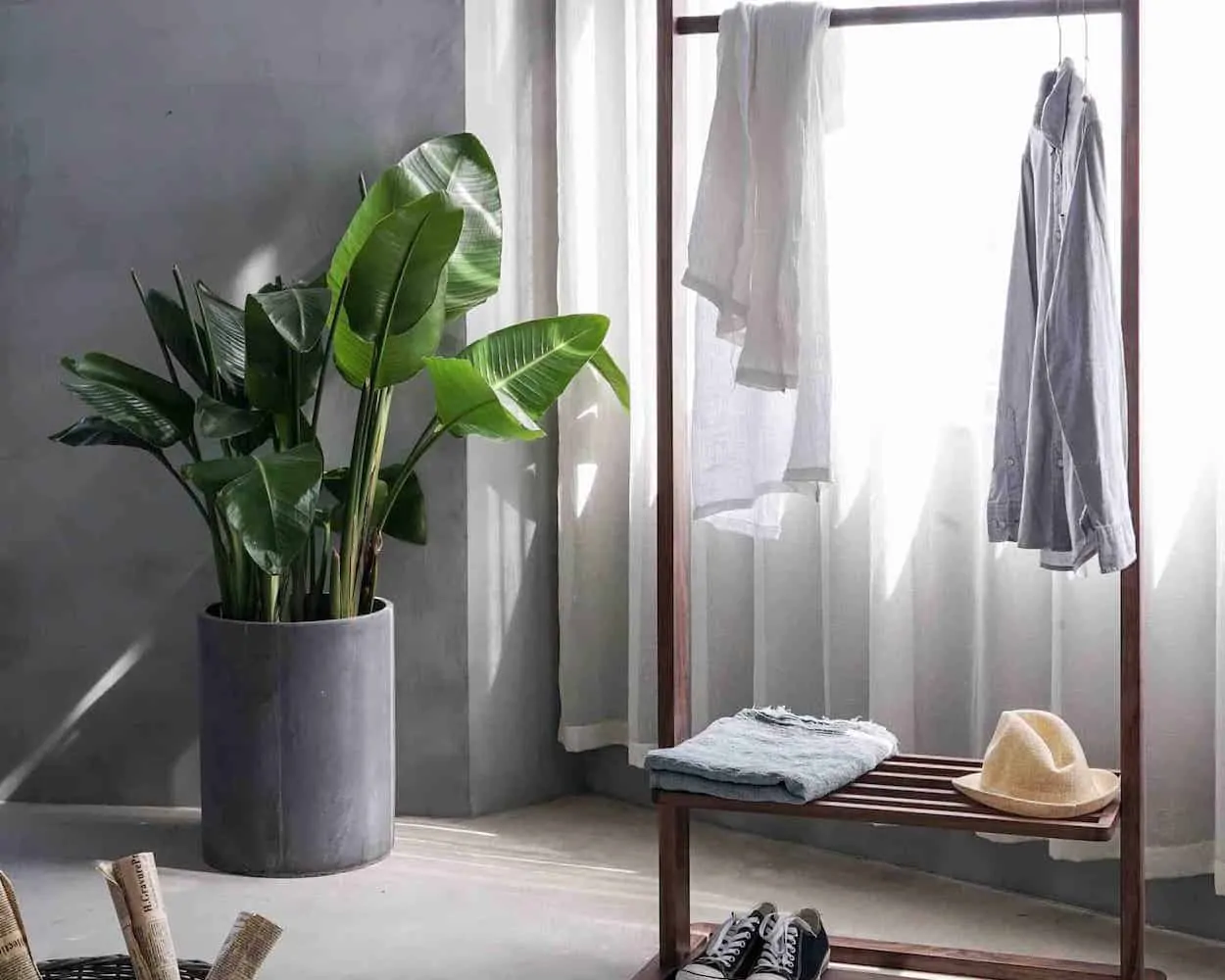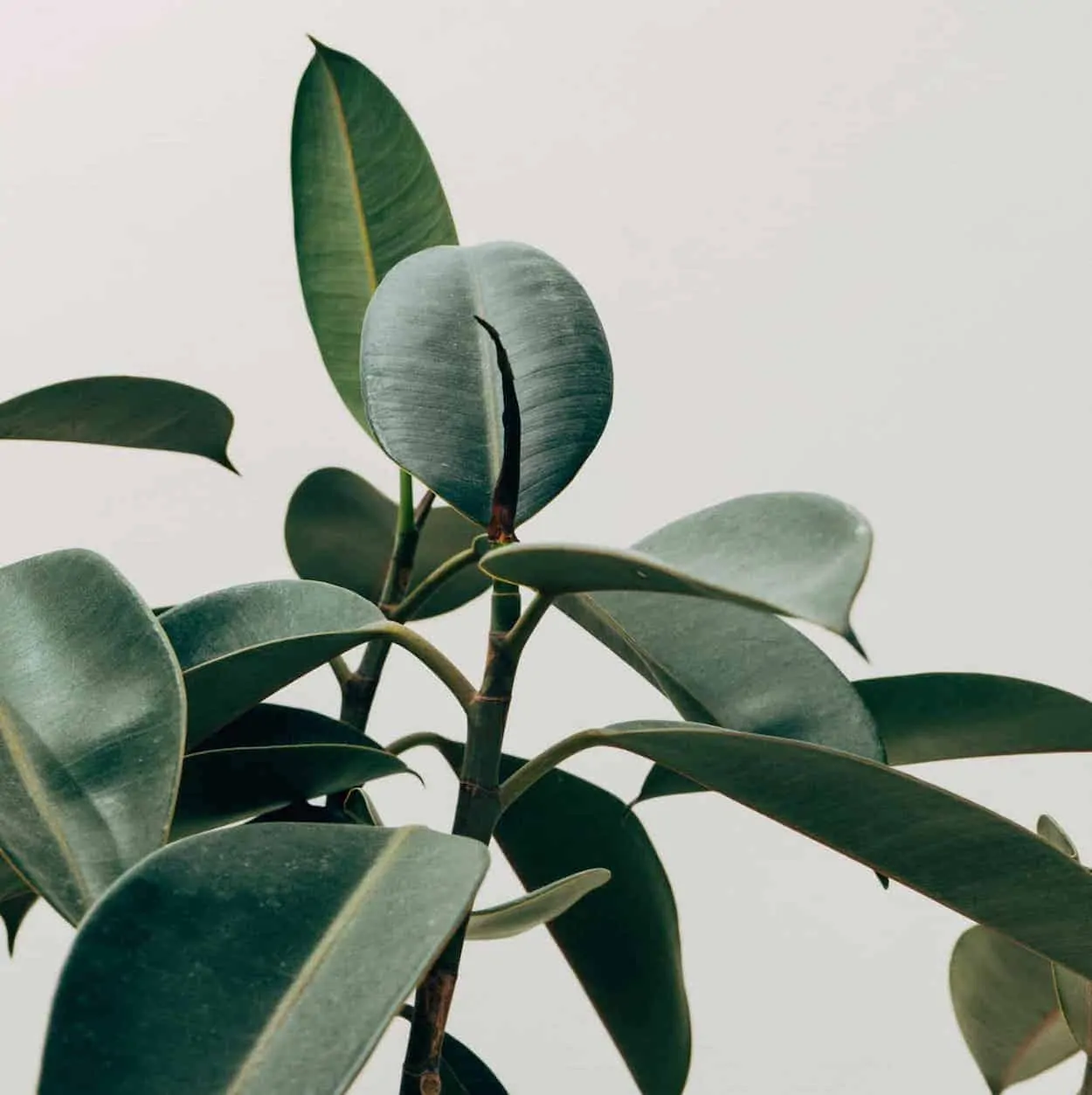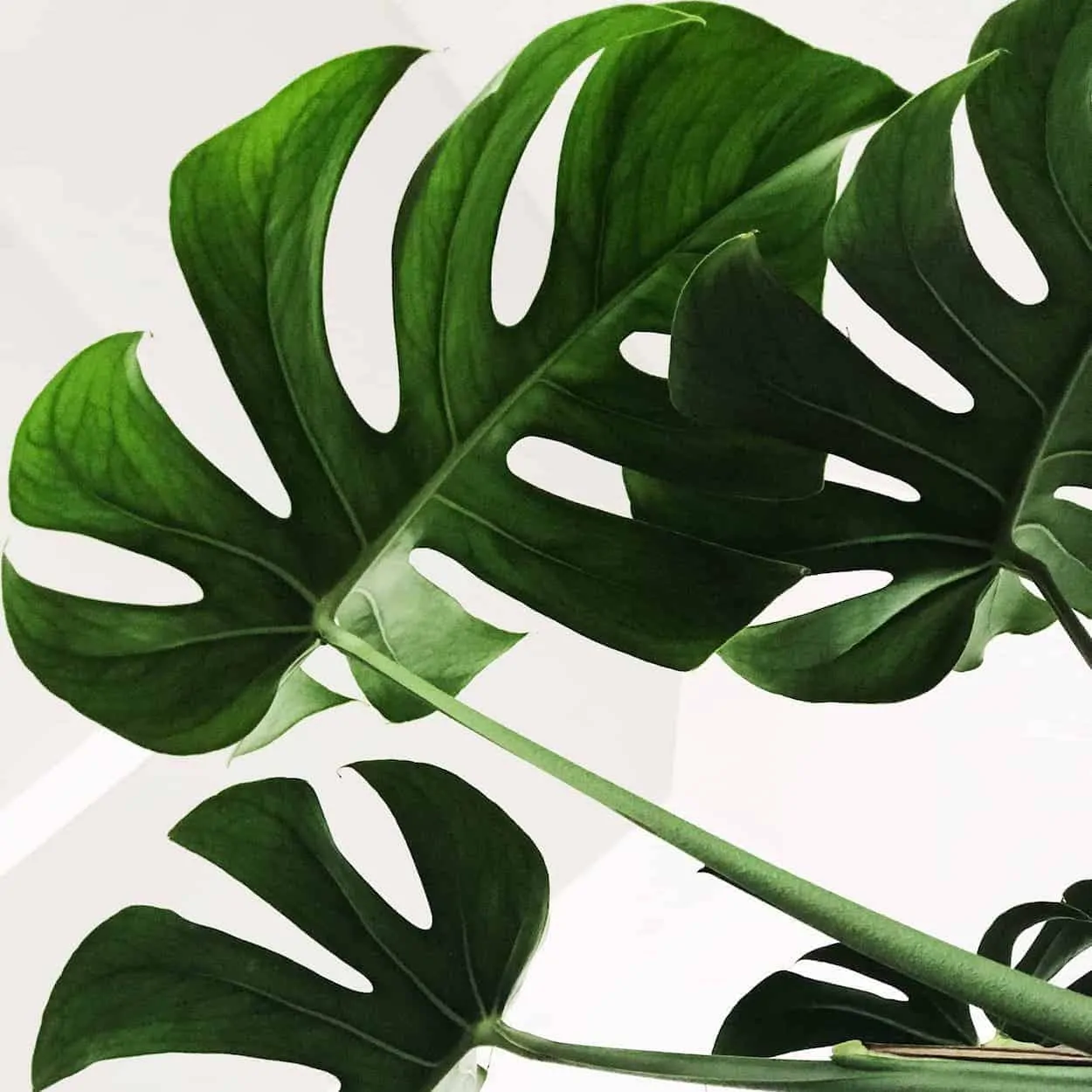
Common house plant benefits and choosing the right plants for your home
Certain common houseplants offer a wealth of wellness benefits that will enhance not only the design of your home, but also your self-care strategy and overall wellbeing. When thinking about self-care, it is easy to overlook the space around you, but incorporating a touch of green into your home can brighten your space aesthetically and allow you to reap the benefits.
If you choose the right indoor plant variety, you’ll have a relatively effortless yet continuous dose of beauty, health and happiness. We’ll cover the benefits first, then help you choose from a list of plants. Not all of us know the differences in growing conditions and light requirements of a weeping fig, snake plant, peace lily, or spider plant, but we’ll do our best to help.
Houseplants 101:
The benefits of plants indoors
Plants provide aesthetic benefits
One of the best reasons to look to plants for self-care is that they are visually appealing. They come in a variety of beautiful shapes, sizes, textures, and colors so you can easily find one that fits with your personal style.
Being beautiful is a survival mechanism for plants (and a thriving mechanism for you). Just like flowers have gorgeous petals to attract pollinators, each plant species evolved to have specific characteristics that would increase the likelihood of survival in nature.
Some of these characteristics include features such as lush and colorful leaves or the ability to flower. For many, this evolutionary process has been so successful that they now have a relatively easy life — in the homes of humans.
Houseplants offer health benefits
You will quickly notice a wonderful calming effect as soon as you bring a bit of the outdoors inside.
Several studies have shown that being in the vicinity of plants reduces stress, alleviates illnesses related to being indoors for long periods, and improves concentration.
The scientific rationale for these health benefits is that common house plants:
- reduce carbon dioxide
- eliminate air pollutants
- release oxygen
- regulate room temperatures
- rid dust and particles
- reduce background noise
- and more
One of the most well-known studies on the health benefits of indoor plants is the NASA air-purifying plant study. In this study, NASA identified a list of common houseplants that will clean your air and subsequently improve your health.
Indoor plants are easy to care for
Indoor houseplants are skilled survivors and know how to adapt. As a result, there are many types of houseplants that are able to thrive indoors if the right conditions are met.
True, some indoor plants are fussy and not all of them are suitable for beginners. However, if you choose the right plant you’ll find that a hands off approach is actually the best strategy.
The ideal plants for beginners and brown thumbs are those with built-in mechanisms that allow them to self-sustain with only the essentials of light, water, and air.

9 common house plant types
There is a diverse array of plant varieties but, when it comes to common houseplants, you are most likely to come across the following in your local plant store or nursery. Before jumping to an English Ivy or a Sansevieria, decide first on what category of plant you would like. Knowing whether you want a hanging basket, a large tree in a corner of a room, or a tree that thrives in low humidity, indirect light, or is generally low maintenance will make selecting a plant much easier.
- Air plants
- Cactus plants
- Exotic plants
- Fern plants
- Foliage plants
- Flowering plants
- Hanging plants
- Succulent plants
- Tree plants
AIR PLANTS
Also known as Tillandsia, these are small, low maintenance, and great for novice growers. They typically grow on top of other plants or trees and don’t need soil or long roots.
Air plants get their nutrients from the air and only require periodic fresh air, bright indirect light, and a weekly mist or soak in a bowl of water.
CACTUS PLANTS
Cactus plants (which are technically succulents) are one of the most popular indoor plants because of their stark beauty, variety of sizes, and ease of care.
Native to arid environments, they require a lot of bright sunlight. However, because they are tough and slow-growing they don’t need as much watering or repotting as other indoor plant types.
EXOTIC PLANTS
Exotic plants, like pothos plants, are typically lush plants that come from tropical environments and are loved for their jungle or Japanese minimalist aesthetic.
Some are sensitive and difficult to maintain so most suitable for advanced growers, but there are a few varieties that are easy for intermediate level plant owners.
FERN PLANTS
Ferns are green plants that don’t flower and are native to damp, shady environments. For that reason, they are happiest in low-light areas in the home where they can get humidity.
So long as you meet these conditions and protect them from dry air and extreme temperature changes, they’ll be a lovely addition to your space.
FOLIAGE PLANTS
Foliage plants, such as snake plants, are plants with colorful, eye-catching, green leaves that look quite ornamental. Because of their fancy leaves, they are a nice complement to green-dominant indoor plant assortment.
That said, many foliage plants are native to either tropical or arid environments so you’ll need to be aware of any unique care requirements. Typically, these plants tolerate low light or indirect sunlight and moist soil (but not waterlogged).
FLOWERING PLANTS
Flowering plants are plants that bloom such as orchids, peace lilies, and hibiscus, and make an elegant addition to the home.
Getting a plant to flower is typically a skill of master green thumbs, but don’t worry — most of the time they are sold already flowered and many require minimal maintenance.
HANGING PLANTS
Indoor hanging plants, such as the philodendron, are those with long trailing leaves and look incredible in a hanging basket or wall planter.
If you love decor and want to embellish your space, these show stoppers are the way to go. Most of these plants do best in bright light, but indirect as opposed to sitting directly in the sun.
SUCCULENT PLANTS
Succulent plants (also just called succulents) are thick and fleshy plants that retain water in their leaves. Aloe vera plants are the best example, and technically cacti fall into this category as well.
Succulents are drought resistant and very forgiving if you don’t water them regularly (in fact, they prefer dry soil). However, they do need ample amounts of medium to bright indirect sunlight.
TREE PLANTS
Tree plants (like Fiddle Fig Leaf and Rubber Tree plants) are large and fast-growing plants that grow tall and look stunning in the home. The ZZ plant grows similarly to tree plants but doesn’t get as tall (usually maxing out at five feet).
The most common indoor varieties are typically easy to care for, however it’s best to get them small so they have the ability to grow up. Otherwise, make sure you have tall ceilings.

Decorating with indoor plants
In addition to self-care, for all the corners, nooks and empty spaces in your home – this is a perfect minimalist and feng shui design solution.
Decorate with common house plants instead of knick knacks and breathe new life into otherwise neglected areas in your space.
Sometimes untouched surfaces can be intimidating, but you may not want to purchase unnecessary items just because you need gap fillers.
Instead, use a variety of lovely plants housed in beautiful pottery to act as door stoppers, table settings, bookshelf accessories, and to fill just about any void that you don’t want cluttered with kitsch.
Imagine a lovely rubber tree positioned in the corner of your bedroom: lush green in an unassuming neutral pot against a white backdrop.
In just a few weeks admiring this simple, natural beauty it will be hard to imagine anything else being there and you will want to recreate that aura in other parts of your home.
In addition to the wellness benefits of having green and organic flora throughout your home, they naturally enhance the aesthetic of any space they are in.
And, being inexpensive and easy to care for, what better simple pleasure to indulge in when it comes to designing your interior?
Best online houseplant shops
Our favorite houseplant shop is The Sill, because they stock a gorgeous variety of easy-care indoor plants and deliver them straight to your door.
This modern online garden center is full of low-light plants and plants for beginners that come in a variety of sizes that can be optionally paired with pots and planters.
Explore our favorite houseplants below from their assortment below, or visit The Sill for their full indoor plant collection.
For ease of purchase, Amazon carries a ton of indoor houseplants from reputable sellers.
Etsy, Wayfair and Bloomscape are also great places to check for fairly priced, beautiful live house plants.
Things to keep in mind when choosing the right plant
While most of these plants are going to be easy to care for, even for non-green thumbs, there are a few things to look out for.
Humidity: Understanding if a plant tolerates low humidity or higher humidity can help you choose if it is the right plant for your home environment.
Sunlight: Some plants will require bright light, while others will thrive in low light. Understanding the light needs of each plant and finding the right place to plant in house layouts should be done before you purchase any plants.
Water: The growing conditions of various plants will differ when it comes to watering. While many of the plants that we’ve discussed in this post require watering only every few days to keep soil moist, the exact timing and amount of water should be studied before purchasing.
Size and Space: Some common house plants will remain the same size for most of their life, while others will grow, especially with the right light, soil and growing conditions. Keep in mind that if you bring certain plants into the house, they could grow significantly. Be aware of this before purchasing if you have low ceilings or confined spaces.
Room Aesthetics: While it probably seems obvious, if you plan on rearranging or adding new furniture to a room, consider how the plant will fit into the layout of your home. Adding new furniture can change a room from bright light to low light, or become too crowded for certain plants. Think of yourself as an interior designer when choosing plants and have a defined space for each one.
Full list of great house plants to choose from
- Arrowhead Vine
- Calathea (Prayer Plant)
- Cast Iron Plant
- Chinese evergreen
- Columnea
- Corn Plant
- Dieffenbachia
- Dracaena
- English Ivy
- Fiddle Leaf Fig
- Garden Croton
- Grape Ivy
- Hoya
- Jade plant
- Kalanchoe
- Lucky bamboo
- Norfolk Island Pine
- Orchid
- Peace lily
- Peperomia
- Philodendron
- Ponytail Palm
- Pothos
- Rubber fig
- Rubber Tree
- Snake plant
- Spider plant
- Weeping fig
- ZZ Plant
Adding one or two of these common house plants to your home can certainly make it more aesthetically pleasing and actually improve your health. While these plants are easy to care for, knowing the growing conditions, bright light vs. low light vs. indirect light and the basics of caring for a plant will reduce stress instead of adding it. The result can be a room full of beautiful green leaves and a home that you love to spend time in. If you have any questions about certain houseplants or finding the right choices for your house, feel free to reach out to us through our Contact page and we’ll be happy to answer any questions.
Affiliate Disclosure: As an Amazon Associate, Minimalism Co earns from qualifying purchases.
Minimalism Co also participates in other affiliate marketing programs that may pay a commission to Minimalism Co without affecting the price a customer pays.